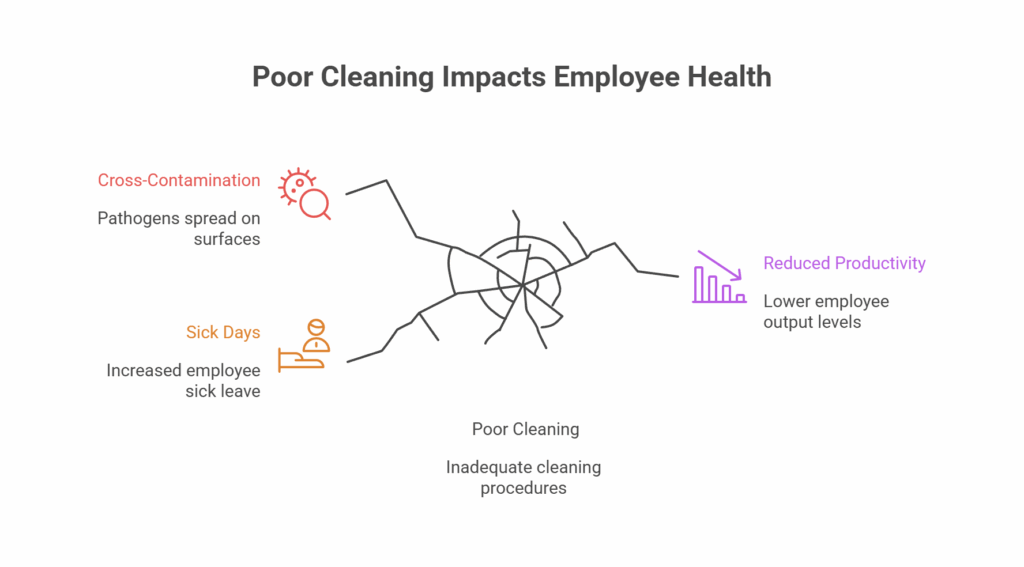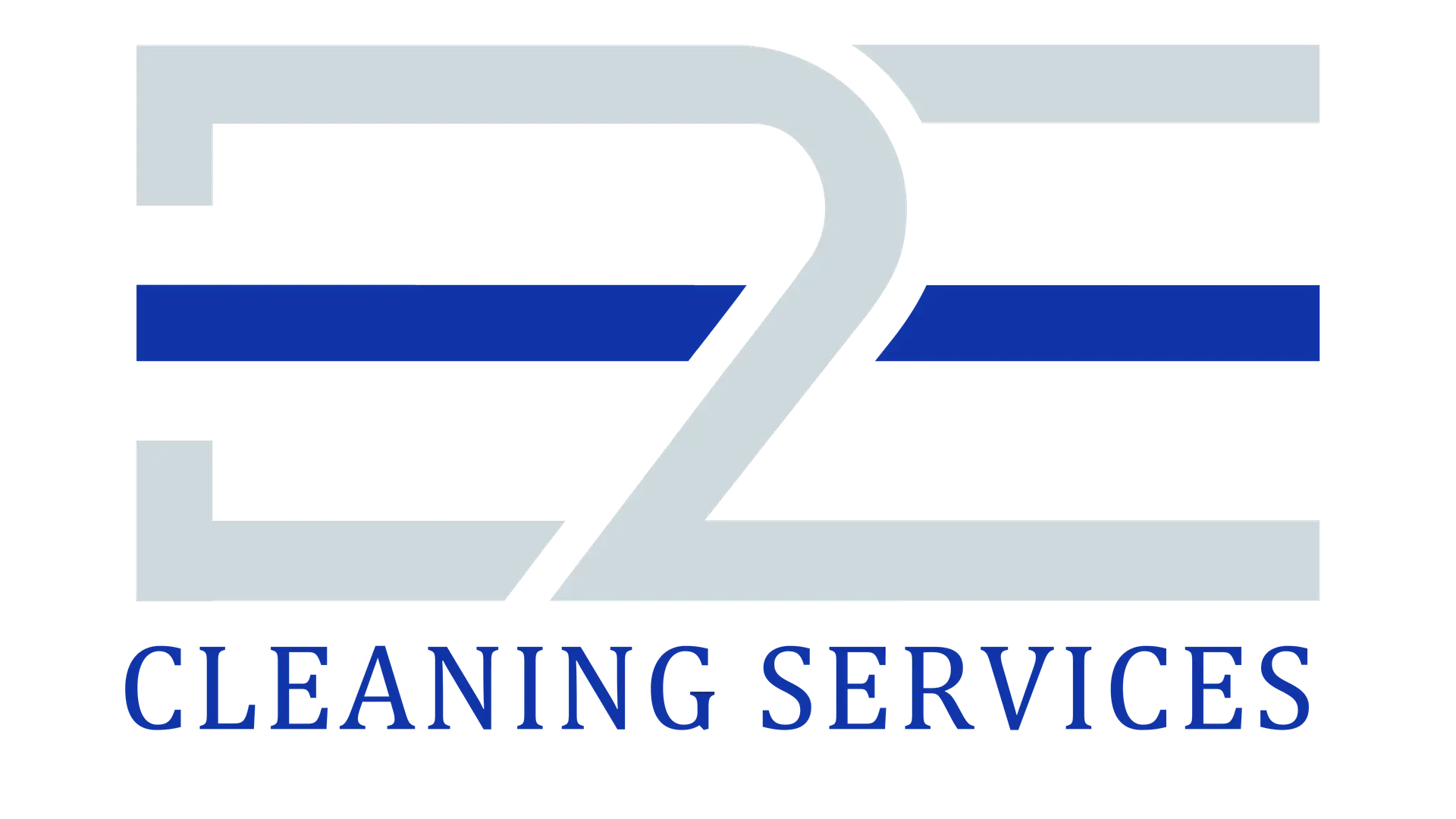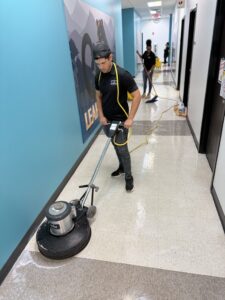This analysis assesses how professional cleaning services can become a smart business investment rather than just another expense.
With the use of data gathered in the commercial cleaning industry of Orlando, it is demonstrated that high-quality cleaning is an effective way to reduce expensive employee absenteeism, extend the life of fixed assets, protect regulatory compliance, and enhance corporate reputation.
This article presents a model of computing cleaning ROI and provides useful guidelines to facility managers and business owners who are determined to obtain the best value of their cleaning investment.
The Hidden Price of Cutting Corners on Cleaning
When organizations review their budgets, cleaning services are always put under the category of an expense as opposed to an investment thus opening the door to cutbacks in such expenses. The result of this misclassification is a set of hidden expenses that outweigh the savings of low-level cleaning operations.
Ineffective cleaning habits leak corporate resources in various interconnected ways. When the environment is not well sanitized, pathogens increase absenteeism. The performance of building systems is reduced when dust and debris clog HVAC systems.
Unclean premises have a negative impact on customer perception, which undermines revenue prospects. Failure to comply with regulations may attract huge fines in addition to operational setbacks.
This point of view is clarified by a typical mid-sized office in Orlando that will spend between $ 800 and $1,200 a month on professional cleaning. The cost appears to be high until it is compared to the cost of three employees being absent at work each month because of workplace illness (an estimated 1,500 in lost productivity) or the faster wear and tear of carpeting that needs to be replaced one year earlier than expected (another 5,000-10,000).
Professional cleaning is a strategic choice that affects the bottom line in several financial pipelines. Despite the fact that the price of such services is clearly displayed on monthly bills, the savings linked to the maintenance of assets, increased productivity, regulatory compliance and reputation protection are largely intangible.
Breaking Down the Real Costs of Poor Cleaning
Employee Health and Productivity
Poor cleaning procedures have a direct impact on health and performance of a workforce. The current average sick days lost by the average employee is 4.6 days annually but this number rises significantly when the working conditions are not well taken care of.
Cross-contamination is bound to follow when surfaces are left contaminated with pathogens.
The high-touch surfaces that are not cleaned well are the transmission vectors, including doorknobs, elevator buttons, and shared equipment.
Studies show that employees are 15% – 20% more productive in clean workspaces. For example, if 20 employees each works 5 % more efficently, that´s like gaining one extra full-time worker without hiring anyone new.
- According to the U.S. employers, sick leave is costing them about 225.8 billion dollars in lost productivity
- Workers in clean workplaces experience %25 fewer allergy and asthma symptoms
- Absenteeism decreases %3 – %5 in buildings with strong cleaning programs

Equipment and Asset Damage
Inadequate cleaning hastens the wear and tear of physical assets. HVAC systems accumulate dust and debris forcing motors to work harder and increase energy consumption by about 15-20%. The embedded grit causes asymmetrical wear on the flooring and carpets as it serves as an abrasive material with every step.
Electronic equipment has a shorter life when the dust accumulated on the components leads to overheating and early failure. Replacing a computer costs an average of between $1,200 and $1,500, commercial printers and other specific equipment are even greater investments.
- Filthy HVAC systems cost 5-15 % more in energy and cut system life by 2-5 years
- The cost of carpet replacement in commercial establishments is $4-$6 per-square foot
- Dust causes about 70 % of the failures of all electronic equipment
Reputation and Compliance Risks
The perceptions of customers are created the moment one enters a place of business. The negative perceptions in the competitive Orlando marketplace mean lost revenue. As per published consumer-behavior studies, 75 % of customers base the credibility of a firm, at least partly, on the extent of facility cleanliness.
Regulatory compliance is industry-specific but has financial ramifications across the board in the event of non-compliance. Healthcare workers are required to follow a high level of disinfection, food services are to follow certain sanitation guidelines and every business must meet OSHA workplace safety standards.
- 95 % of customers report that they would not come back to a facility that they thought was dirty
- Violations of health-code may be fined between $500 to $2,500 per violation
- Orlando commercial buildings have to adhere to the Chapter 5 ventilation requirements of Florida Building Code
DIY vs Professional Cleaning: A Data-Driven Comparison
Cost Analysis
In any company that is considering DIY cleaning or hiring professionals, both direct and indirect costs should be considered.
DIY also requires the purchase of equipment, commercial vacuum cleaners are between $500 to $1200, floor buffers are between $1500 to $3000, and the frequent purchase of supplies (about $200 to $400 a month on a mid-sized office).
In addition, this method will require allocation of staff and time to cleaning.
Orlando professional cleaning services are usually quoted per square foot or in packages. And rates can go from:
- Small offices (under 2,000 sq ft): 400 600 per month on normal service
- Medium offices (2,000 10,000 sq ft): 800 1,500 per month
- Big spaces (10,000+ sq ft): Special rates based on requirement
Professional services can be costly to look at, but the services include equipment, supplies, training, and specialized knowledge in the rates. Moreover, these service providers use commercial grade equipment that has better filtration and performance as compared to consumer alternatives.
Quality and Consistency
The issue of inconsistency is common in operational cleaning programs. People who, out of need, engage in cleaning activities, usually without having received any formal training in disinfection measures, chemical safety precautions, or cross-contamination prevention, often work in these conditions.
When companies are short of time, cleaning duties are put on the back burner and this results in unacceptable hygiene lapses.
Compared to professional cleaning services, however, the following standardized protocols are used:
- Cleaning processes that are well documented and specifically tailored to fit any environment
- Adequate chemical contact times which are assured to kill the pathogens
- Preventive cross-contamination systems that are color coded
- Systematic inspections in quality assurance
Such differences are the most significant in the most specialized settings, such as medical facilities, food service operations, and childcare centers, where sanitization standards are mandatory to ensure safe operation.
Time Investment and Opportunity Cost
When business owners or managers hable cleaning tasks themselves, they’re not focusing on growing their business. This lost opportunity often costs more than hiring professionals.
- Mean Time Invested in Basic Office Cleaning: 1-2 hours a day
- Professional Employee Time: $25-75+/hour
- Small office weekly opportunity cost: 125-750
This opportunity cost is completely eliminated by the use of professional services, as the employees can focus on their main tasks, while the cleaning is done during off-hours with the least amount of disturbance.
How Quality Cleaning Extends Asset Lifespan
Flooring Preservation
Flooring is one of the most expensive facility costs and the replacement cost varies according to the material used and it ranges between 4$ -12$ per square foot.
Professional cleaning has the capacity to prolong the life of a floor by:
- Using extraction techniques which wash away abrasive particulate on carpet fibers
- Choosing cleaners that have the right pH level to protect flooring finishes
- Regular cleaning processes to avoid permanent stains
- Protective treatments, creating wear and soiling barriers
Professional care is particularly useful to hard surface flooring. The difference between amateur and professional maintenance can be seen in the preservation of shine, avoidance of scratches and the durability of overall appearance.
The following are the common elements of professional hard floor maintenance:
- Minimise grit by daily dust mopping
- Correct wet cleaning and correct dwell times
- Refinishing (stripping and waxing) to restore protective layers after a certain period of time
- Burnishing to preserve appearance between refinishing
HVAC System Efficiency
The performance of heating, ventilating, and air-conditioning systems can be compared to the breathing capability of a building. These systems are bound to collect dust, allergens and other pollutants through constant air circulation.
These issues are addressed by proper maintenance through:
- Planned vent and air-return cleaning
- Replacing the filters in time
- Cooperation with HVAC technicians to clean the systems more thoroughly
Well-maintained HVAC systems are more efficient, consuming 5-15 % less energy and providing better indoor air quality. The replacement costs of the system, which are estimated at 15$ – 25$ per square foot on commercial premises, make preventive cleaning a tempting financial offer.
Building Envelope Protection
In addition to the apparent facades, professional cleaning protects the building envelope, which is the physical barrier between the interior and exterior. Window tracks, door thresholds and other outside openings require frequent inspection and maintenance to prevent moisture penetration and the following structural damage.
Professional work includes:
- Complete the exterior entryway cleaning so as to reduce the dirt entering the house
- Cleaned windows and frames to provide good seals
- Drainage should be considered for redirecting water properly
Such preventive strategies can prevent expensive failures of the building envelope that can initiate major repairs or renovations.
Industry Standards and Compliance Requirements
Sector-Specific Protocols
The cleaning expectations for each sector are based on their own risk management profiles:
Healthcare Facilities:
Healthcare Facilities must adhere to CDC and OSHA guidelines specifically towards:
- Cleaning between patient occupancies
- Routine disinfection of high-touch surfaces using EPA-registered disinfectants
- Special procedures in the management of biohazardous materials
- Documentation of the requirements of infection control compliance
Food Service Operations:
Restaurants and food processing plants in Orlando are required to adhere to the Florida Department of Health regulations that include:
- Food contact surfaces sanitization with the help of special chemical concentrations
- Washing of food preparation surfaces repeatedly
- Correct cleaning chemicals storage and handling
- Sanitation as pest prevention
Educational Institutions:
Schools have special problems of high-density occupancy and vulnerable populations:
- Common areas and classrooms are cleaned and disinfected on a daily basis
- Special attention to sports facilities and lockers
- Green cleaning demands in most districts
- Use respiratory-friendly cleaning products to protect students with asthmatics
Certification Standards
Cleaning associations are professional bodies in charge to ensure service quality:
- CIMS (Cleaning Industry Management Standard) certification is an attestation of organizational excellence
- GBAC STAR accreditation confirms the ability to prevent infectious diseases
- Sustainable building operations are assisted by LEED-compliant cleaning programs
- Membership of ISSA reflects adherence to cleaning industry best practices
Orlando businesses need to ensure that their cleaning vendors have the knowledge, particularly in regulated sectors where failure to comply with the requirements attracts high penalties.
Emerging Compliance Considerations
The post-pandemic cleaning protocols have evolved to incorporate higher sanitization standards with a greater emphasis on:
- Improvement and control of air quality
- Touchless cleaning technologies
- Increased coverage of cleaning work
- More cleaning of high touch surfaces
Organizations must update their cleaning programs to meet these evolving standards, ensuring compliance and maintaining competitiveness in workplace safety.
Orlando Commercial Cleaning Investment Analysis
Local Market Considerations
Cleaning requirements and costs are affected by the trait of the business environment in Orlando. The tourism sector creates high standards of cleanliness, especially in the hospitality and retail outlets where the perception of the customer directly affects the income.
Cleaning requirements are also affected by local climatic conditions:
- Mold and mildew thrive in high humidity
- Extended pollen seasons require powerful air filters
- Frequent rainfall demands enhanced entryway maintenance
Such aspects tend to increase the cleaning expenses in Orlando a little more than the national averages, but also multiply the possible returns on investment in terms of customer satisfaction and preservation of assets.
Cost-Benefit Framework
These are some of the market-specific factors that should be considered when evaluating commercial cleaning investments in Orlando:
- Median prices of commercial cleaning: $ 0.11 – $ 0.15 per square foot of basic services
- Premium services (disinfection, pressure washing, etc ): An additional $ 0.03 – $ 0.07 per square foot
- Special services (floor care, window cleaning): These are normally billed on an extra basis
The calculation of ROI must include the following advantages:
- Labor cost savings of outsourcing (average of $ 27 per hour of fully-burdened employee cost)
- Longer value of asset life (usually 20 % – 30 % increased with professional maintenance)
- Less employee absenteeism (average value: $ 150 – $ 250 per avoided sick day)
- Energy savings (%515 with well maintained HVAC systems)
On a typical 5,000-square-foot office in Orlando, the monthly cost of professional cleaning may be $750 and the monthly benefits of these combined factors may be measured at $1,200 to $1,800.
Budgeting Recommendations
The budgets of Orlando businesses should be allocated to cleaning in the following principles:
- Industry type: healthcare and food service need more allocation of sources
- Traffic volume: high-traffic facilities require more attention and maintenance
- Appearance expectations: customer facing areas should be given high-end services
- Regulatory requirements: compliance needs are often the drivers of minimum service levels
Tiered cleaning services is one of the strategic approaches:
- Sanitation needs and high-use areas daily service
- Moderate use areas deep clean once per week
- Carpet, window, and other periodic specialty services on a monthly basis
This balanced design is the most cost-effective and facility-protective.
Calculating Your Commercial Cleaning ROI
Quantifiable ROI Metrics
A critical evaluation of commercial cleaning ROI should have quantitative measures that should show definite financial returns.
These are the KPIs that should be monitored:
Direct Cost Savings:
- Less sick days (measure professional cleaning impact before/after )
- Increased flooring and fixtures life cycle
- Lower maintenance of building and HVAC
- Less emergency clean-ups
Indirect Benefits:
- Greater employee satisfaction and retention
- The customers had improved perception scores
- Shorter time spent on complaints
- Higher quality of the indoor environment
Compliance Value:
- Evaded fines and penalties of regulations
- Reduced insurance premiums because of reduction of risk
- Minimized the risk of being liable to slip-and-fall injuries
- Easy to read audit and inspection reports
ROI Calculation Framework
Calculate cleaning ROI with this simplified equation:
ROI = (Value of Benefits – Cost of Cleaning) ÷ Cost of Cleaning) x 100
A 10,000 sq ft office in Orlando:
- Professional cleaning cost: 1500$ per month ($18.000 per year)
- Higher production: $800/month ($9,600/year)
- Extended Assets life: $750/month ($9,000/year)
- Cut down on absenteeism $500/month ($6,000/yr)
- Total benefits: $2,050/month ($24,600/year)
ROI = [($24,600 – $18,000) / $18,000] x 100 = 36.7 %
This case illustrates a % 36.7 cleaning investment payoff, which means that it is a good business decision and not just a cost.
Long-term Value Assessment
In addition to short-term ROI, think of the compounding advantages of quality cleaning:
- Prevention of major capital expenditures through assets conservation
- Purchase and brand value of customer loyalty
- Creation of a healthier work culture and low turnover
- Business and sustainability goals
Such long-term benefits are not reflected in quarterly financial statements but have a lot of influence on the success of an organization in the long-term.
Conclusion: Transforming Cleaning from Expense to Investment
Professional commercial cleaning represents a significant change in thinking about facility maintenance, as a cost center, to a strategic investment.
Quality cleaning leads to quantifiable financial benefits by avoiding early wear and tear of assets, employee health protection, regulatory compliance and customer perception improvement.
Orlando businesses face unique issues in designing and sustaining healthy clean environments, but also have access to a competitive local cleaning market with specialised knowledge. Facility managers and business owners can use the framework presented in this article to make informed decisions about their investments in cleaning by using data.
After all, cleaning value is not only about shiny surfaces; it is about protecting your most important assets: your people, your physical infrastructure and your reputation.
When done correctly and quantified, professional commercial cleaning is not an expense, it is a money saver.






